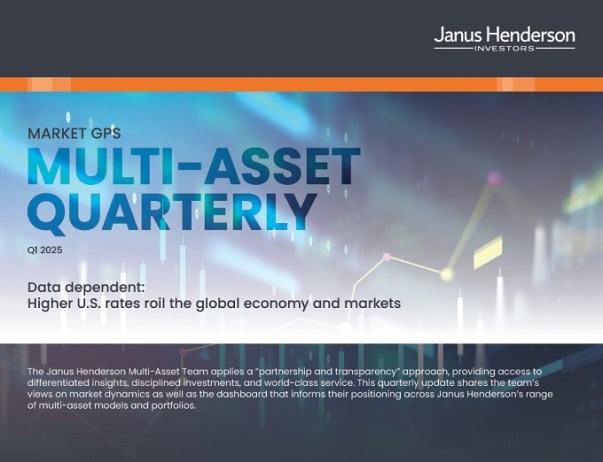Multi Asset Quarterly Q1 2025: Higher U.S. rates roil the global economy and markets
What do current market dynamics mean for asset allocation? The Market GPS Multi-Asset Quarterly highlights key drivers and positioning.

4 minute read
Key takeaways:
- The extended economic cycle bodes well for medium-term investors, but is also driving short-term volatility as the market prices higher rates.
- Meaningful global dispersions in multiples and earnings expectations create opportunities for diversification across countries and sectors.
- Recent pain on core bond prices leads to more attractive government yields, a boon to multi-asset portfolios.
The Janus Henderson Multi-Asset Team applies a “partnership and transparency” approach, providing access to differentiated insights, disciplined investments, and world-class service. This quarterly update shares the team’s views on market dynamics as well as the dashboard that informs their positioning across Janus Henderson’s range of multi-asset models and portfolios.
DownloadEquity securities are subject to risks including market risk. Returns will fluctuate in response to issuer, political and economic developments.
Fixed income securities are subject to interest rate, inflation, credit and default risk. As interest rates rise, bond prices usually fall, and vice versa. High-yield bonds, or “junk” bonds, involve a greater risk of default and price volatility.
Smaller capitalization securities may be less stable and more susceptible to adverse developments, and may be more volatile and less liquid than larger capitalization securities.
Sovereign debt securities are subject to the additional risk that, under some political, diplomatic, social or economic circumstances, some developing countries that issue lower quality debt securities may be unable or unwilling to make principal or interest payments as they come due.


